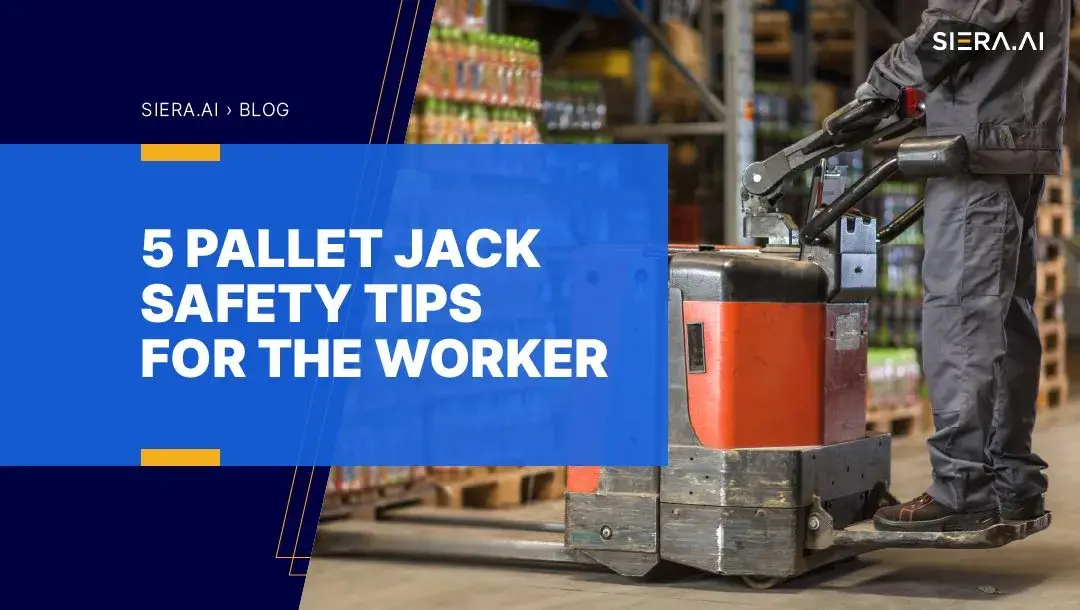5 Pallet Jack Safety Tips for the Worker
Pallet jacks are the most basic type of forklift that can fit into smaller spaces. Most facilities use a pallet jack even if forklifts are present. That’s because forklifts normally handle the heavier, more bulkier loads while pallet jacks handle smaller loads, most often the size of a pallet. Even though pallet jacks are easier to use than a forklift, pallet jack safety still needs to be followed.
Let’s take a look at a few important pallet jack safety measures you can implement to keep your workers and pedestrians safe.
#1: Pallet jack safety training
OSHA does require companies to provide certification training for any facility worker that operates a pallet jack regardless if it’s on a full-time or part-time basis. The pallet jack safety training educates workers on the proper use of the material handling piece of equipment.
Next, examine your facility and identify risk factors for the pallet jack to ensure any potential hazards are avoided. Once the risk factors and training are complete, the workers are fully equipped to begin operating the pallet jack safely.
#2: Pallet jack safety inspection
Yes, pallet jacks do need inspections even if it doesn’t have as many parts to it as a forklift truck. Before each use, you’ll need to look for damage, defects or even cracks. Next, be sure the tire pressure is at optimal level and that the wheels are working well. Then be sure to check the steering, brakes, forks, and controls.
That is certainly a lot for a worker to remember each time they use the pallet jack. Something will get missed. Some managers supply a booklet to fill out a checklist before each use. Where’s that again? Let’s not give the worker a reason to NOT fill out the inspection checklist. Instead, let’s eliminate the paper altogether and go digital. Use a tablet mounted on the pallet jack or use your mobile device. With SIERA.AI’s S2 safety solution, simply scan the worker’s badge, or enter the employee PIN number and begin answering the questions.
Now the benefit of digital is the ability to add, delete, change, edit any of the questions and answers you want to gain information from. Digital allows you to focus on the information that is most important for you to gather about your facility and pallet jack.
#3: Pull the pallet jack
This is a very common error. If you’ve ever been to the airport, you’ll see more and more people pushing their luggage with wheels instead of pulling. If you notice, they have less control over their bags as it sways from the side to side. Then if they try to turn a corner, control is lost. Similarly, it’s important to pull the pallet jack in order to maintain the best control of the equipment.
#4: Feet & Hands stay above the forks
Many workers will say, ‘it’ll only take a second’, and that’s exactly how long it takes for an accident to occur. Workers must be aware of their feet and hands prior to raising or lowering the pallet jack especially with loads. Feet and hands can get caught or smashed underneath the pallet jack causing serious injury.
Next, be sure when operating the pallet jack your hands and feet don’t get caught where a painful pinch occurs. Sometimes fingers, other parts of the hand or feet get pinched when a certain motion catches the foot or hand.
#5: Avoid the inclines
Inclines are best avoided, but if the workers need to use an incline from time to time, it’s best to know how to maneuver the pallet jack for safety. Anytime the worker needs to use the pallet jack on an incline, be sure to pull the pallet jack. Remember how we just discussed what happens when you push luggage? The worker will maintain better control of the pallet jack if it is pulled up on an incline rather than pushed.
Pallet Jack Safety Tips
Now that you know the best way to operate the pallet jack, be sure to follow them regularly for best results for the worker and the pallet jack. If you need to get a digital inspection checklist for your pallet jack, let us know. We’ll let you play around with it first so you are comfortable with the digital safety solution.
Book a Risk-Free Trial
Or Get a Custom Quote
We just need a few details to get you started.

